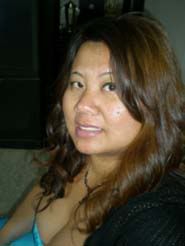Night Terrors: Can You Be Killed by a Nightmare?
Monday, October 31, 2011
Nightmares, Nocebos, and the Mind-Body Connection
by Shelley Adler
Rutgers University Press
They were all Southeast Asian immigrants, young and healthy -- and dying in their sleep.
Doctors were baffled by the cluster of deaths that began in 1977 and peaked in 1982. By the end of the decade, 117 Hmong tribesmen from Laos had died in the middle of the night without explanation.
Why were these men -- median age 33 and having lived in the US, on average, for 17 months -- mysteriously perishing? Bereft of answers, physicians dubbed the phenomenon Sudden Unexplained Nocturnal Death Syndrome.
But a new book about the cases raises a chilling and provocative question: Can a dream scare you to death?
Drawing on professional literature and folklore, University of California-San Francisco medical anthropologist Shelley Adler, author of “Sleep Paralysis,” makes a compelling case that the deaths may have been triggered by the men’s belief in “dab tsog” -- a demon that visits in the night and smothers.
While the physical cause was likely a shared heart condition prevalent in Asian men, Adler concludes the trauma they suffered in dream-state encounters with a malicious spirit played a part.
One Laotian man described his encounter with the dab tsog to Adler: “A dark shape was coming to me. It came to the bed, over my feet, my legs. It was very heavy, like a heavy weight over my whole body, my legs, my chest. My chest was frozen like I was drowning.”
Adler found such night demons are ubiquitous across cultures and similar to the Western concept of “sleep paralysis” -- described as feelings of wakefulness coupled with intense feelings of fear and the inability to move or speak. It’s caused when the transition into, or from, Rapid Eye Movement (REM) sleep is disrupted. Hallucinations occur during this not-quite-dream state.
“You’re paralyzed but your mind is still going. In some sense it’s like dreaming with your eyes open,” explained Harvard clinical psychologist Richard McNally.
Every culture has its own phrase for the sleep-paralysis “monster.” China refers to it as “bei guai chaak” (“being pressed upon by a ghost”), Estonia has “luupainaja” (“the one who presses your bones”), and Newfoundland dubbed it “Old Hag.” English speakers know incubus and succubus, images immortalized by the 1781 painting “The Nightmare” where a demon sits on a woman’s chest as she sleeps.
Eight percent of the general population experiences sleep paralysis (though some estimates are as high as 30%). Those with psychiatric conditions and PTSD have higher rates.
A 1999 study broke down sleep paralysis into three sub-types that occur cross-culturally: intruder, incubus and an out-of-body experience.
But while sleep paralysis is universally terrifying, can it hurt you?
Adler says yes. She points to the study of nocebos -- placebos’ ugly flip side, which translates to “I will harm” -- when a negative outcome is a consequence of a person’s belief.
Anthropological research on voodoo and hexes, she argues, show that adverse beliefs can harm and even kill. In one study, women who believed they were prone to heart disease were nearly four times as likely to die as women with the same risk factors but no negative beliefs.
“There is both ample scientific evidence and much lived experience that show that the human mind has as great a capacity to make us sick as it has to heal us,” Adler writes.
In the end, she concludes, the Hmong men likely died from a combination of the Brugada syndrome, a cardiac arrhythmia common to Southeast Asian men, and sleep paralysis.
“Although the overwhelming terror brought on by a nightmare attack appears to be a trigger,” she said, “it is the Brugada Syndrome that functions as the mechanism of death.”
Source


































